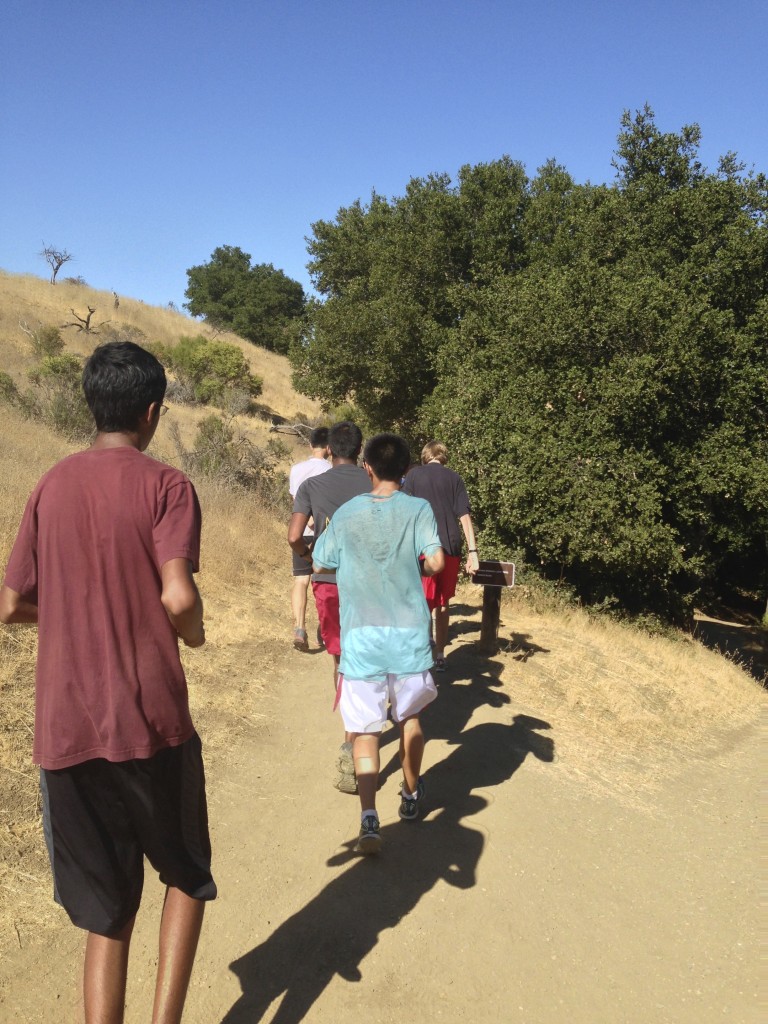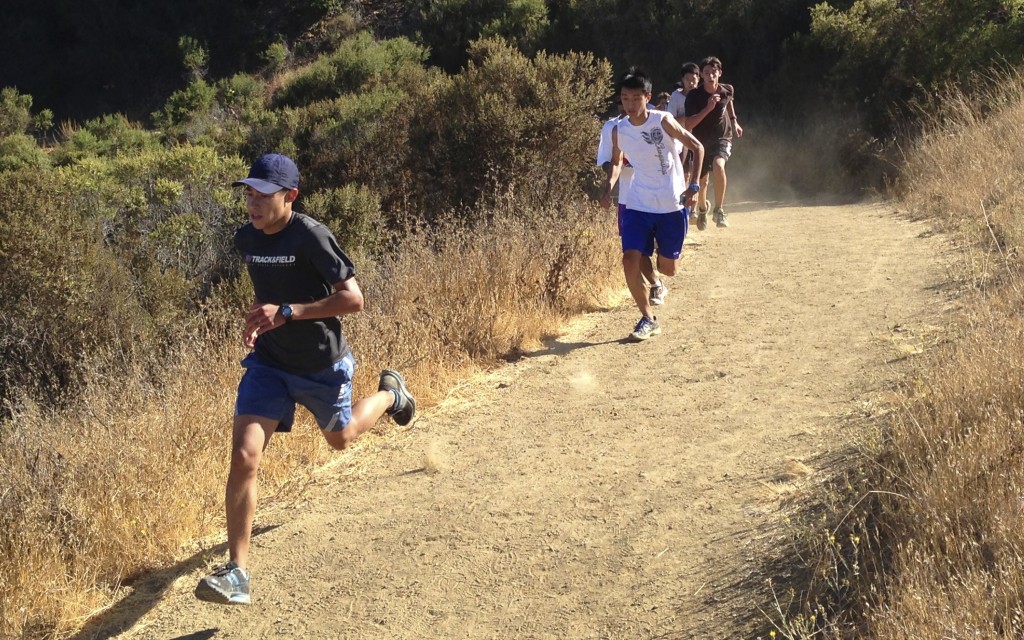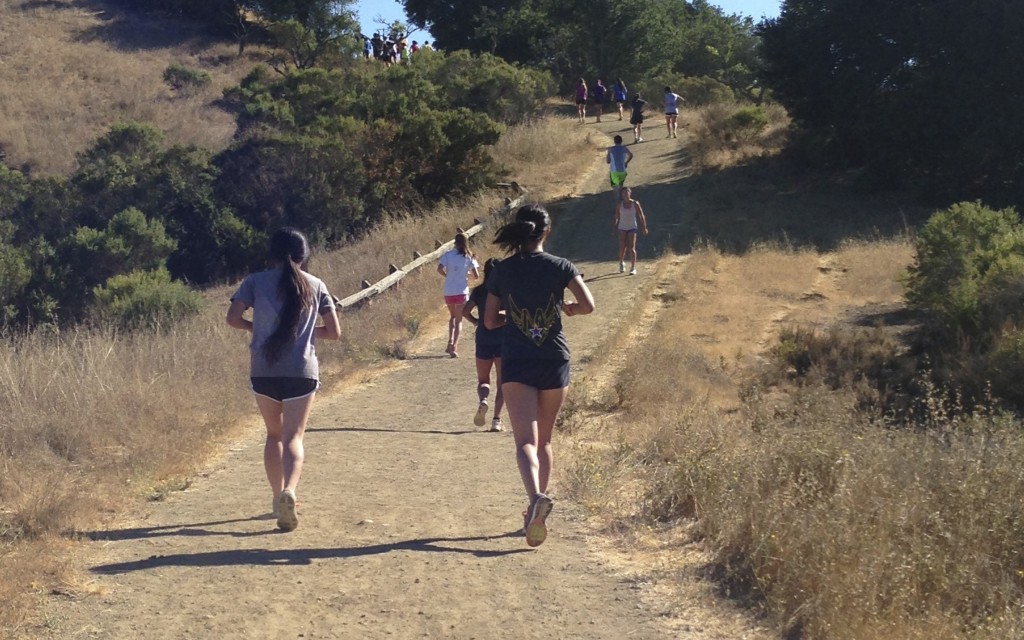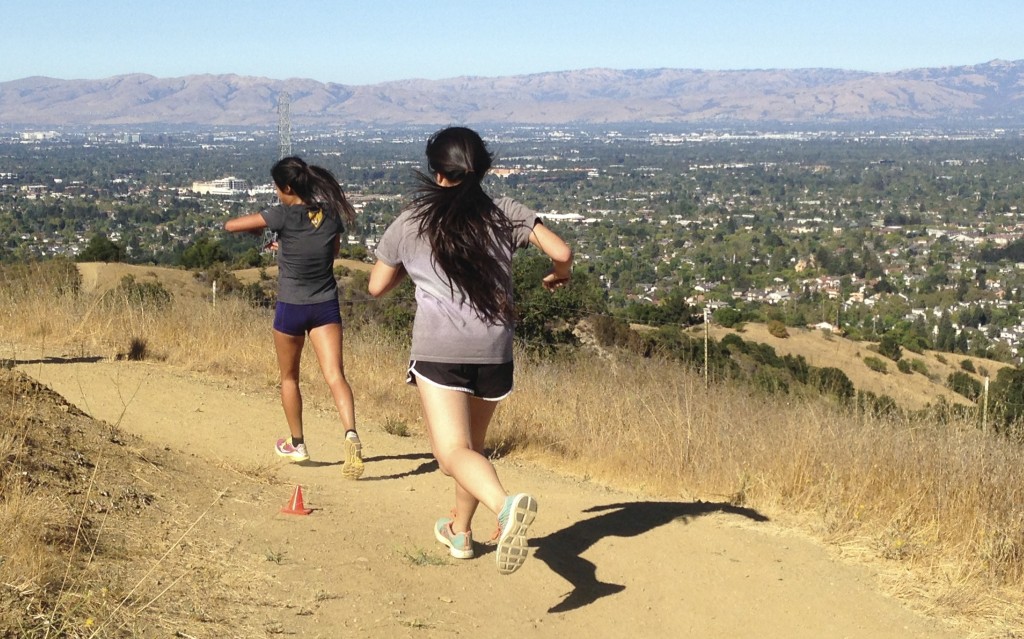“Fartlek” is Swedish for ‘speed play’, and that tells you the main thing I want you to know about a fartlek workout—this workout is meant to be fun! Unlike the other quality workouts that we run (such as intervals, repeats, or threshold runs), fartlek workouts are more unstructured. During a fartlek workout, the running group alternates relatively short moderate to hard efforts with easy running throughout the run. The fartlek workout is a continuous run, during which the runners play with speed and recover with easy-paced efforts. Fartlek runs are particularly fun in a group setting, where you can alternate leaders and mix up the pace and the timing of the different pushes—this gives you the mental benefits of being pushed by your buddies through a workout. During the workout, you run at harder perceived paces but you are not tied to a specific pace, which should reduce the mental stress.
Good fartlek running should give you improved stamina and strength, the ability to recover on-the-run, and better mind-body awareness of what paces feel like and what it feels like to change paces and surge. At the same time, this should be a stress-free workout! That’s why these are great workouts to incorporate into your summer running during a medium distance run once a week.
Here are a few suggestions of fartlek workouts I like. You can run these exact workouts, use these as a starting point to plan your own workout, or just set out with a group and have different people in the group make up each ‘push’ on the run. There is very little ‘right’ or ‘wrong’ with fartlek, it’s basically all good!
Fartlek running is a great way to get a little quality running into your summer, without running into one of the common errors of summer running—training too fast, followed by racing too slow!
Have fun!
Aerobic: After you have warmed up and been running for a while, run 10 to 12 surges of 1 minute long with a 1-minute jog in between (the jog should be at a conversational pace, not at a total shag! You want to drop back down into your regular conversational pace. If you can’t maintain this pace—if you want to slow down a LOT—ease off on your surges a bit). Your surges should feel like a cross-country race pace effort. Most runners describe this pace as a 90 to 95 percent effort. Running at this intensity for 10 minutes or so will help improve your aerobic capacity (VO2MAX).
Aerobic 2: Run five to six surges lasting 2 minutes, with a one minute at conversational pace between each surge. Your effort should be very similar to cross-country race pace effort. Like the previous workout, this fartlek run stimulates your VO2MAX. This run also should make you more comfortable at cross-country race pace—so you don’t go out too fast and crash and burn!
Threshold: Run four to five surges lasting 3 to 5 minutes each with 1- to 2-minute recovery jogs. Your effort should feel slower than your cross country race pace. Most runners descibe this pace as ‘medium’ effort. Effort at this level for 14-25 minutes helps develop a higher lactate threshold. Threshold pace is a very productive speed for training. This fartlek can be a substitute for a ‘fast finish’ or threshold run for that week.
Blended: Run medium-hard 1-2-3-2-1-2-3-2-1 minutes each with one minute recovery runs in between, followed by :15-:30-:45-:30-:15 hard with one minute recovery runs in between. You get a little bit of everything in this workout, stimulating your aerobic strength as well as getting some speed work (muscular/neuro-muscular/anaerobic systems).
Blended 2: 2×2 minutes at cross-country race effort+ 4×30 seconds at hard effort + 4 minutes at medium/threshold effort + 4×1 minute at medium-hard (3200m race effort) with 1 minute recovery; one minute jog recovery between efforts and 3 minutes jog between sets. Run each type of effort keeping in mind what comes next!
Surging: 3-4×1/1/2: Run one minute at a medium effort, then accelerate for 1 minute to your cross-country race effort, then recover for two minutes and repeat.
Rolling Hills: This workout allows the terrain to set the workout: Accelerate on the climbs, recover on the downhill, conversational pace on the flats. A good place for this is to play around in the trail network in the area on top of Fire Trail, towards Hunters and Matt’s Hill and the other direction towards Garrod’s.




